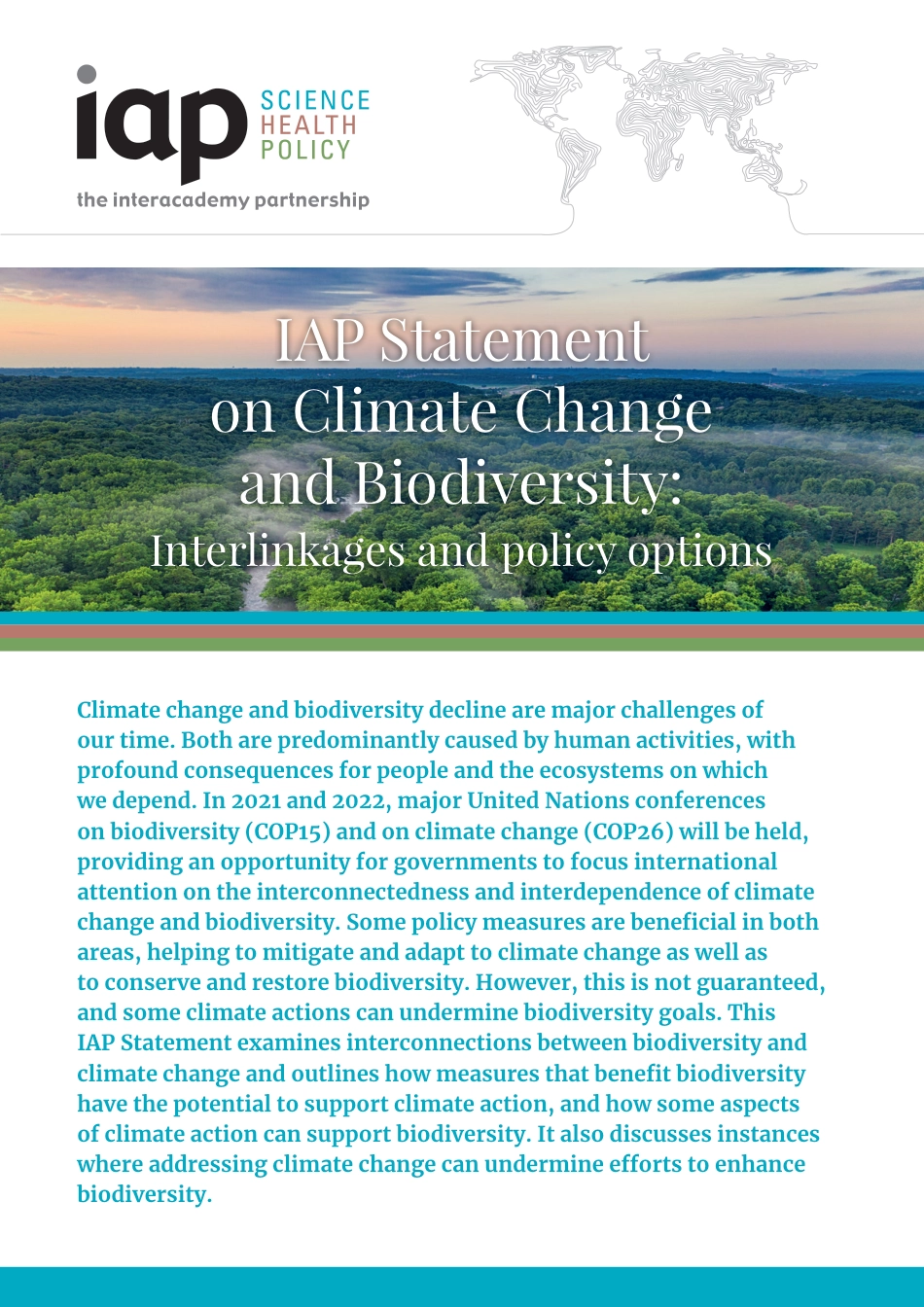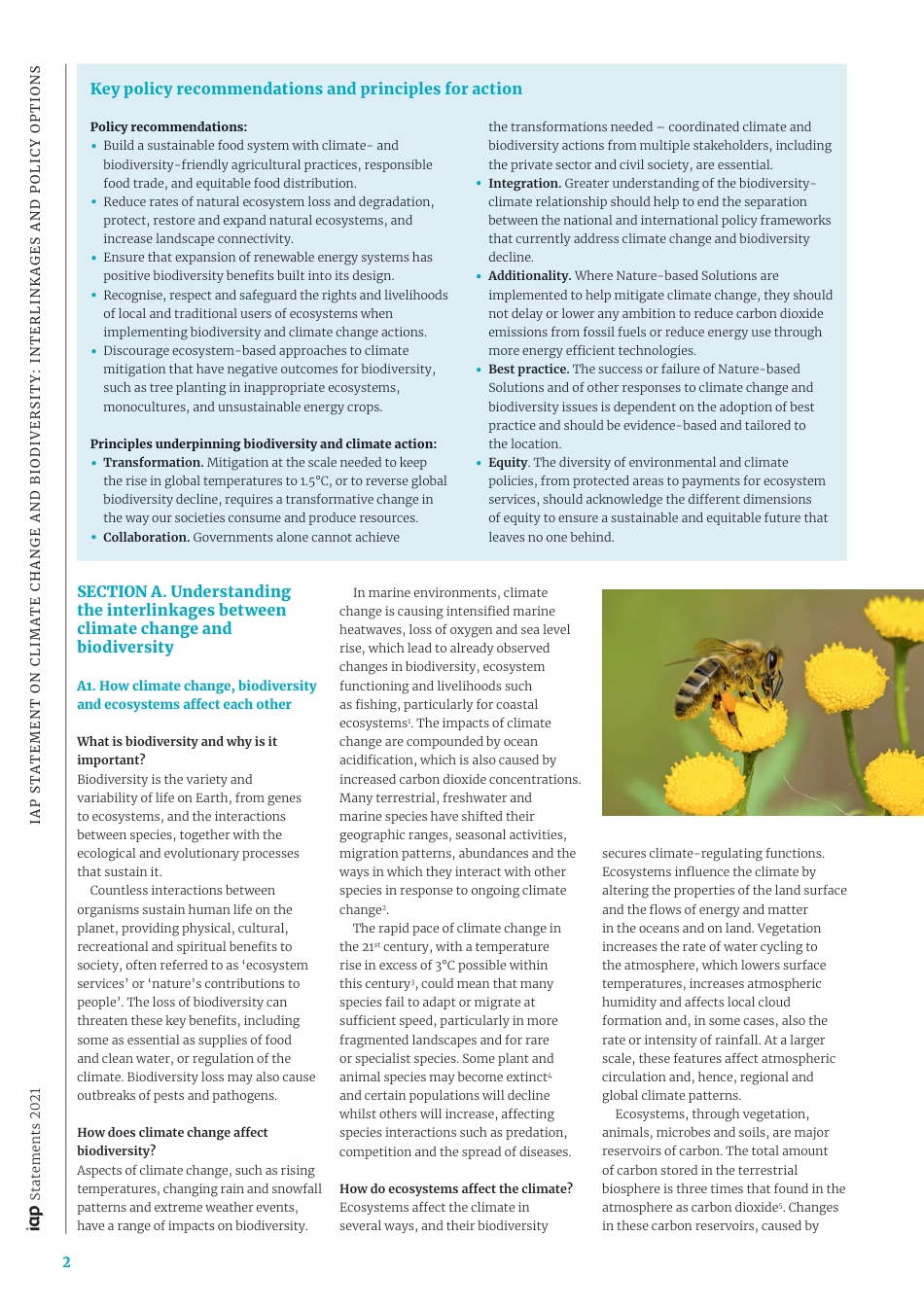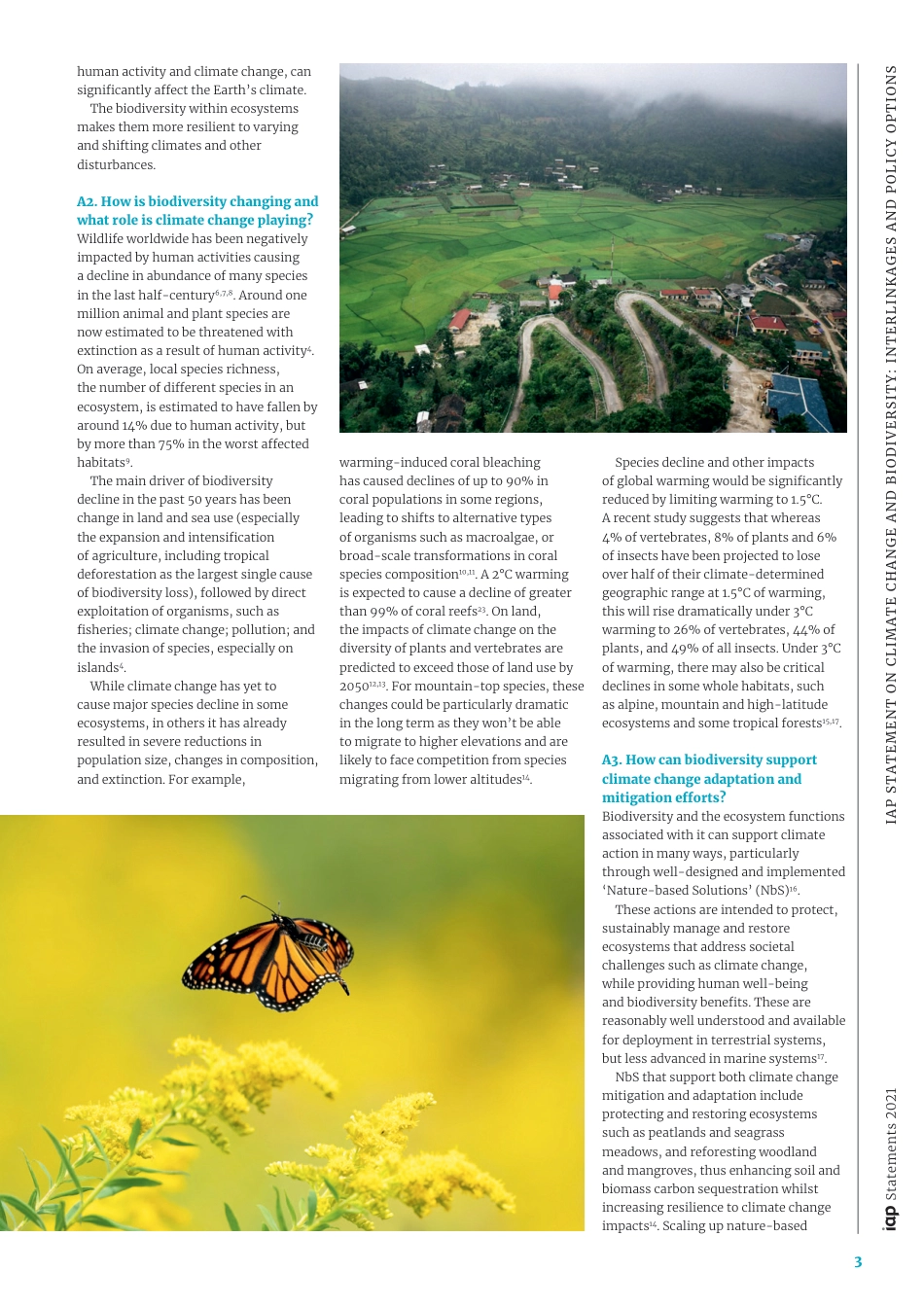IAP Statement on Climate Change and Biodiversity: Interlinkages and policy optionsClimate change and biodiversity decline are major challenges of our time. Both are predominantly caused by human activities, with profound consequences for people and the ecosystems on which we depend. In 2021 and 2022, major United Nations conferences on biodiversity (COP15) and on climate change (COP26) will be held, providing an opportunity for governments to focus international attention on the interconnectedness and interdependence of climate change and biodiversity. Some policy measures are beneficial in both areas, helping to mitigate and adapt to climate change as well as to conserve and restore biodiversity. However, this is not guaranteed, and some climate actions can undermine biodiversity goals. This IAP Statement examines interconnections between biodiversity and climate change and outlines how measures that benefit biodiversity have the potential to support climate action, and how some aspects of climate action can support biodiversity. It also discusses instances where addressing climate change can undermine efforts to enhance biodiversity. Statements 20212IAP STATEMENT ON CLIMATE CHANGE AND BIODIVERSITY: INTERLINKAGES AND POLICY OPTIONSSECTION A. Understanding the interlinkages between climate change and biodiversityA1. How climate change, biodiversity and ecosystems affect each other What is biodiversity and why is it important? Biodiversity is the variety and variability of life on Earth, from genes to ecosystems, and the interactions between species, together with the ecological and evolutionary processes that sustain it.Countless interactions between organisms sustain human life on the planet, providing physical, cultural, re...



